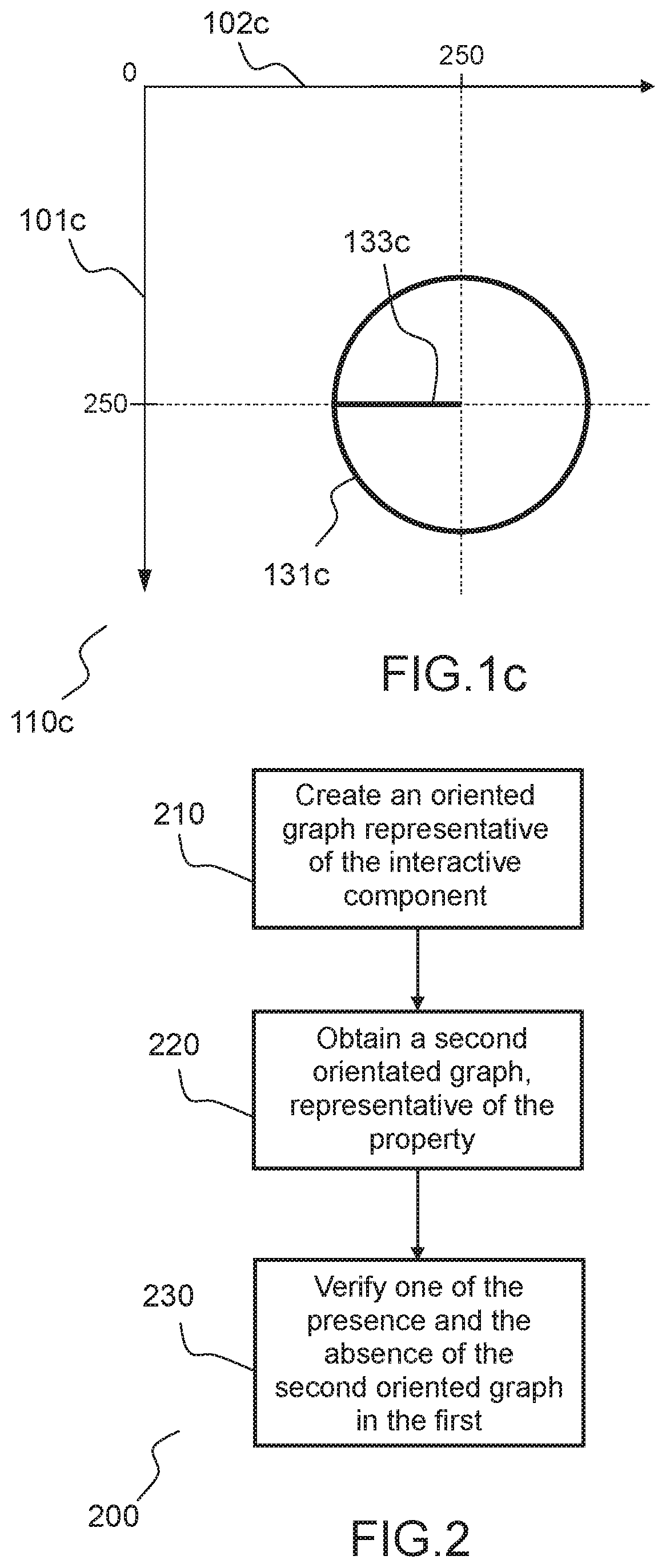Method, software and processing unit for verifying properties of interactive components
a technology of interactive components and properties, applied in the direction of errors detection/correction, visual/graphical programming, instruments, etc., can solve the problems of complexity requiring specialist intervention, the complexity of software, and the cost of the desired reliability level, so as to reduce the testing time of interactive applications and ease the testing of interactive applications.
- Summary
- Abstract
- Description
- Claims
- Application Information
AI Technical Summary
Benefits of technology
Problems solved by technology
Method used
Image
Examples
Embodiment Construction
[0062]In this specification, the invention will be described by way of examples relative to components of the Djnn platform. The Djnn platform, available at http: / / djnn.net / , is a language and programming tool developed by the applicant for designing interactive applications by assembling interactive components. The naming of the component types in this specification refers to their name in the Djnn platform. The applicant also disclosed a processing unit, software and method for defining and controlling the execution of interactive components in the European Application no 15305949.8 filed the same day than the present application. The principles disclosed in this application are the basis of Djnn language, as well of other languages for expressing interactive components.
[0063]However, the invention is applicable to other languages, and a skilled man can easily define new properties while remaining under the scope of the invention. The components and implementations described in th...
PUM
 Login to View More
Login to View More Abstract
Description
Claims
Application Information
 Login to View More
Login to View More - R&D
- Intellectual Property
- Life Sciences
- Materials
- Tech Scout
- Unparalleled Data Quality
- Higher Quality Content
- 60% Fewer Hallucinations
Browse by: Latest US Patents, China's latest patents, Technical Efficacy Thesaurus, Application Domain, Technology Topic, Popular Technical Reports.
© 2025 PatSnap. All rights reserved.Legal|Privacy policy|Modern Slavery Act Transparency Statement|Sitemap|About US| Contact US: help@patsnap.com



